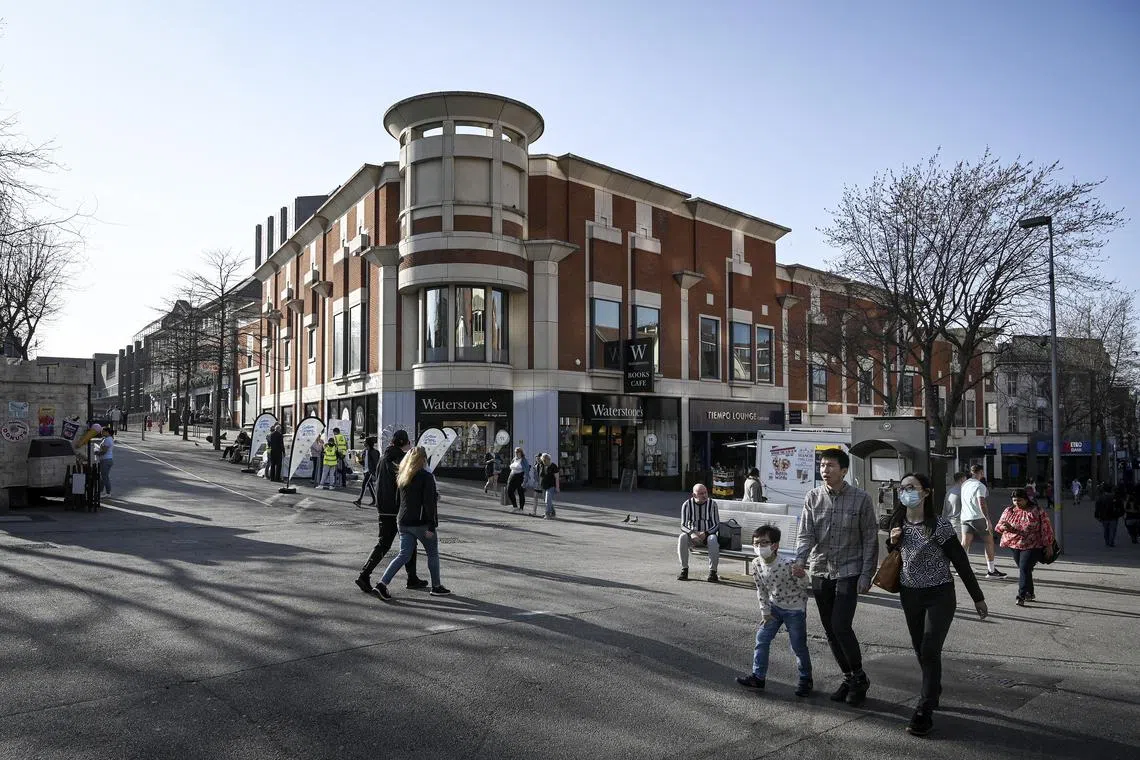Britain sees record net migration: Why are so many people moving to the UK?
Sign up now: Get ST's newsletters delivered to your inbox

Net migration to Britain – people moving in minus those moving out – reached a record 606,000 in 2022.
PHOTO: NYTIMES
Follow topic:
LONDON – For years, Britain’s governing Conservative Party has pledged to restrict immigration, and a vow to “take back control” of borders and migration was a centrepiece of the Brexit campaign to leave the European Union.
Instead, immigration soared in 2022, according to national statistics released on Thursday – news that was somewhat embarrassing to party leaders,
The new figures show that in 2022, net migration to Britain – people moving in minus those moving out – reached a record 606,000.
Migration is driven by a complex mix of domestic and global factors like war, job opportunities and politics.
So what do the numbers say about what is happening in Britain?
Violence and oppression fuel migration
From 2004 to 2017, about 600,000 people moved to Britain each year. In 2022, that figure jumped to 1.163 million, an all-time high and a figure that is unlikely to be matched soon.
There were big increases in 2022 in the number of people fleeing the Russian invasion of Ukraine
But those flows already show signs of subsiding. And some of last year’s surge might have been movement that would have occurred earlier but was delayed by the coronavirus pandemic, when migration dropped.
Until a few years ago, migration from the European Union accounted for most of the influx of people to Britain. But after Brexit took away the automatic right of EU citizens to settle in Britain, the numbers fell sharply, last year accounting for less than 8 per cent of the total.
Emigration from Britain has grown in recent years,
Education and economics
While the current Conservative government has long voiced its opposition to the high levels of migration, Britain has major labour shortages,
The unemployment rate is below 4 per cent, far lower than it was before the pandemic, and many jobs go unfilled, so whatever the government’s position, Britain remains attractive to migrants looking for work. Many employers want the government to grant more work visas.
The government also points to education as a driver of immigration. Foreign graduate students living in Britain have increasingly taken advantage of a provision that lets them obtain visas for family members who are dependants.
Mrs Suella Braverman, the Home Secretary, recently said that such visas had jumped 750 per cent since 2019, to 136,000 last year. Most were for people from Nigeria and India.
The government said it would make the dependant visas harder to get, but migration experts have said the change would have a limited effect, and universities argue against discouraging foreign students, who they say benefit the economy.
Arrivals in the English Channel
The political rhetoric on migration in Britain in recent years has focused largely on the highly visible arrival of people – mostly refugees seeking asylum – in small boats across the English Channel.
But the new migration data offered a timely reminder that migrants making the dangerous crossing of the Channel make up just a small portion of new arrivals, while most enter legally.
Just 45,755 people were detected arriving by small boats across the Channel in 2022, according to government statistics published this year. That amounts to 3.8 per cent of the total number of people moving to Britain.
But even in its response to the new migration statistics released on Thursday, the Home Office focused on how to keep boat arrivals down, in addition to slowing overall immigration.
“We remain committed to reducing overall net migration, while stopping the boats and delivering control of our borders, prioritising tackling abuse and preventing dangerous and illegal crossings,” the office said in a statement. NYTIMES

